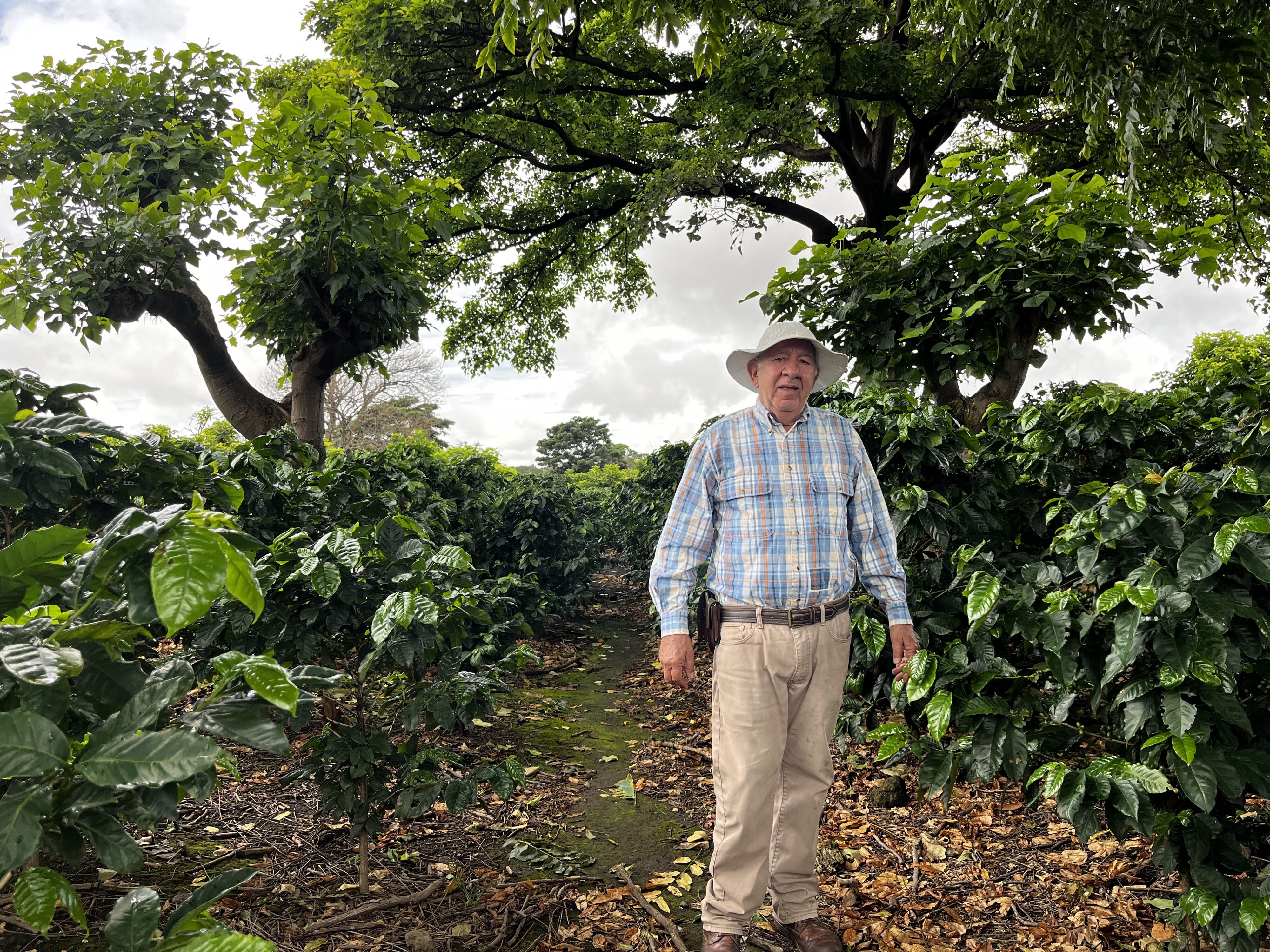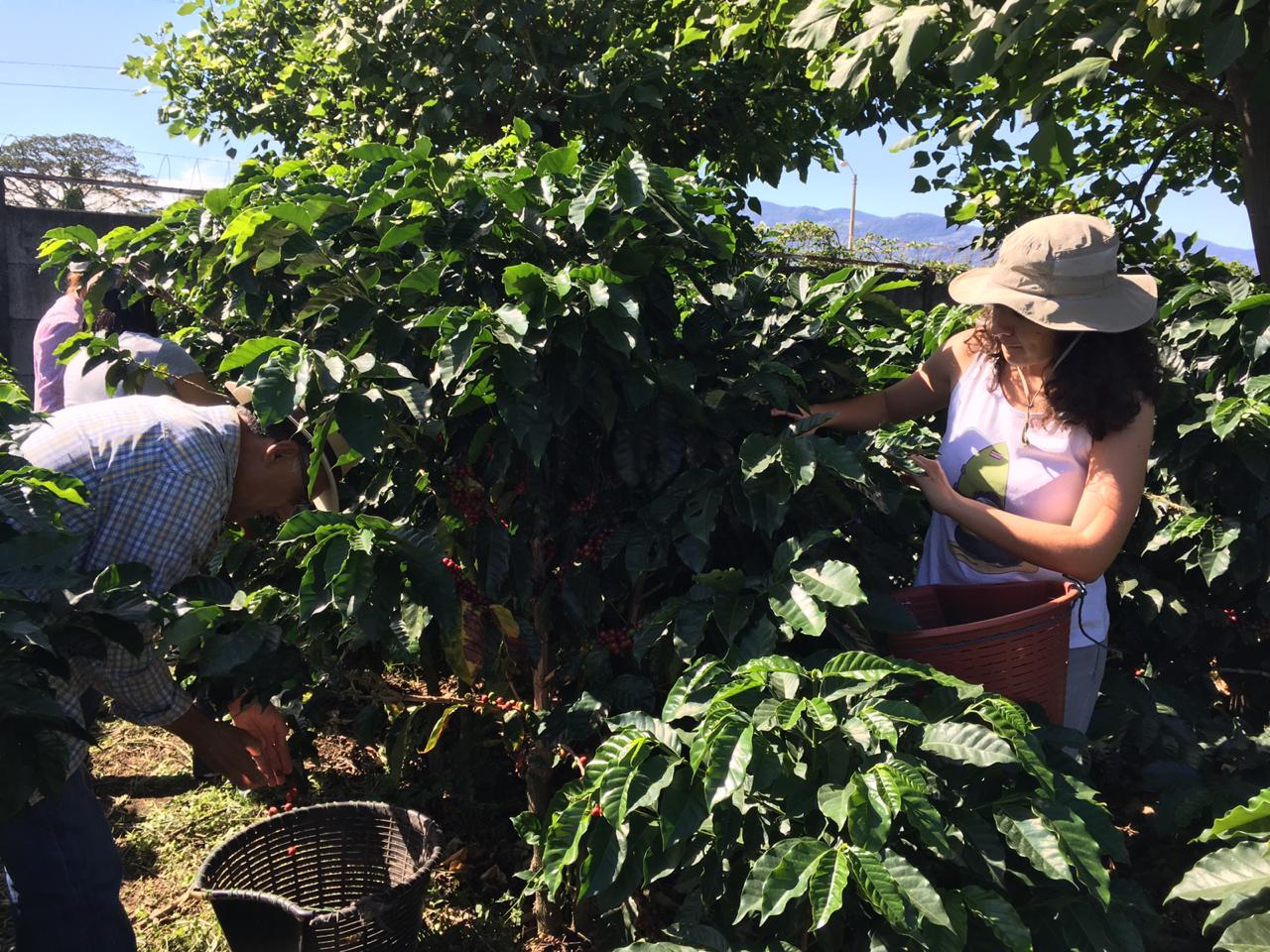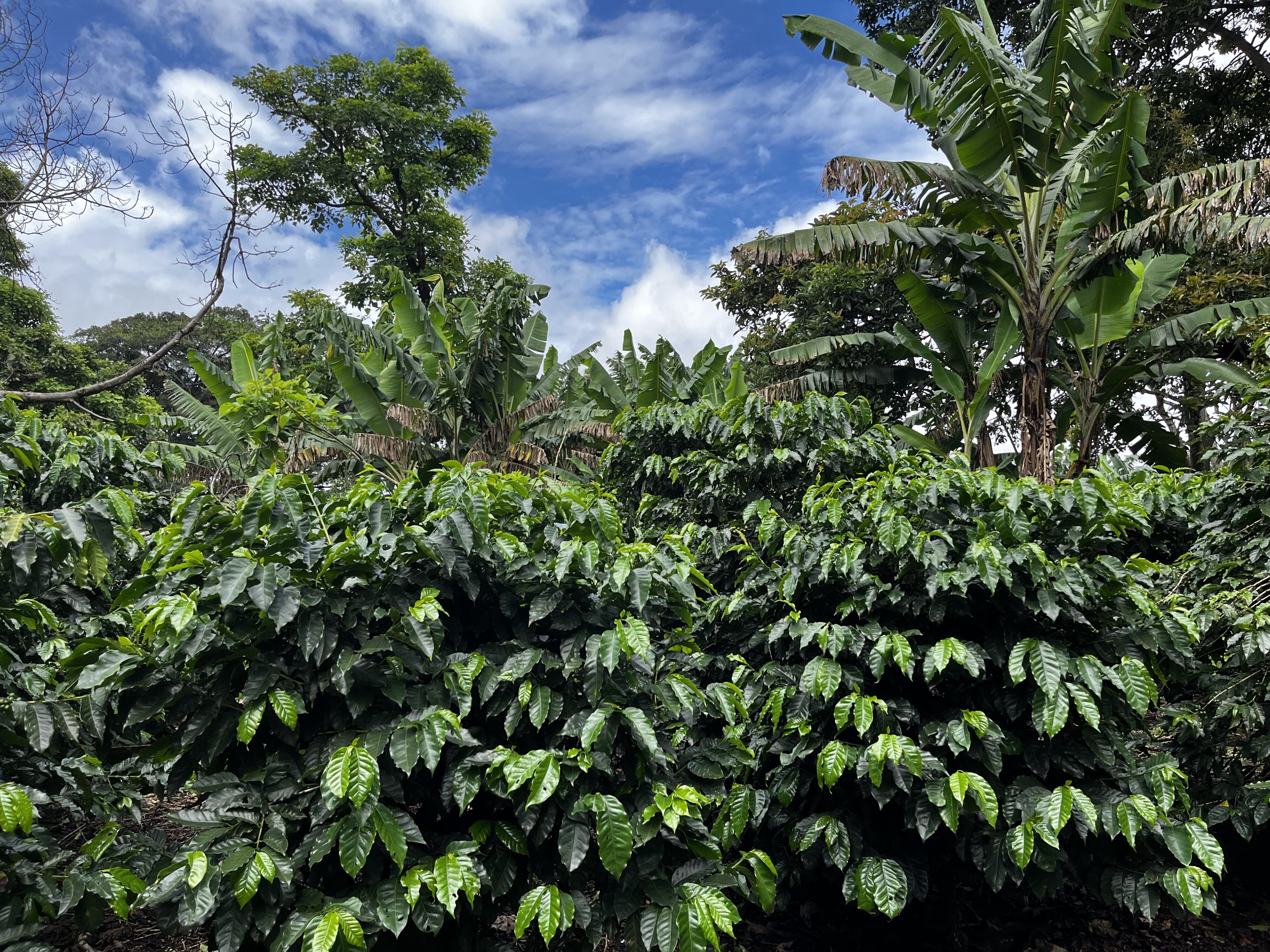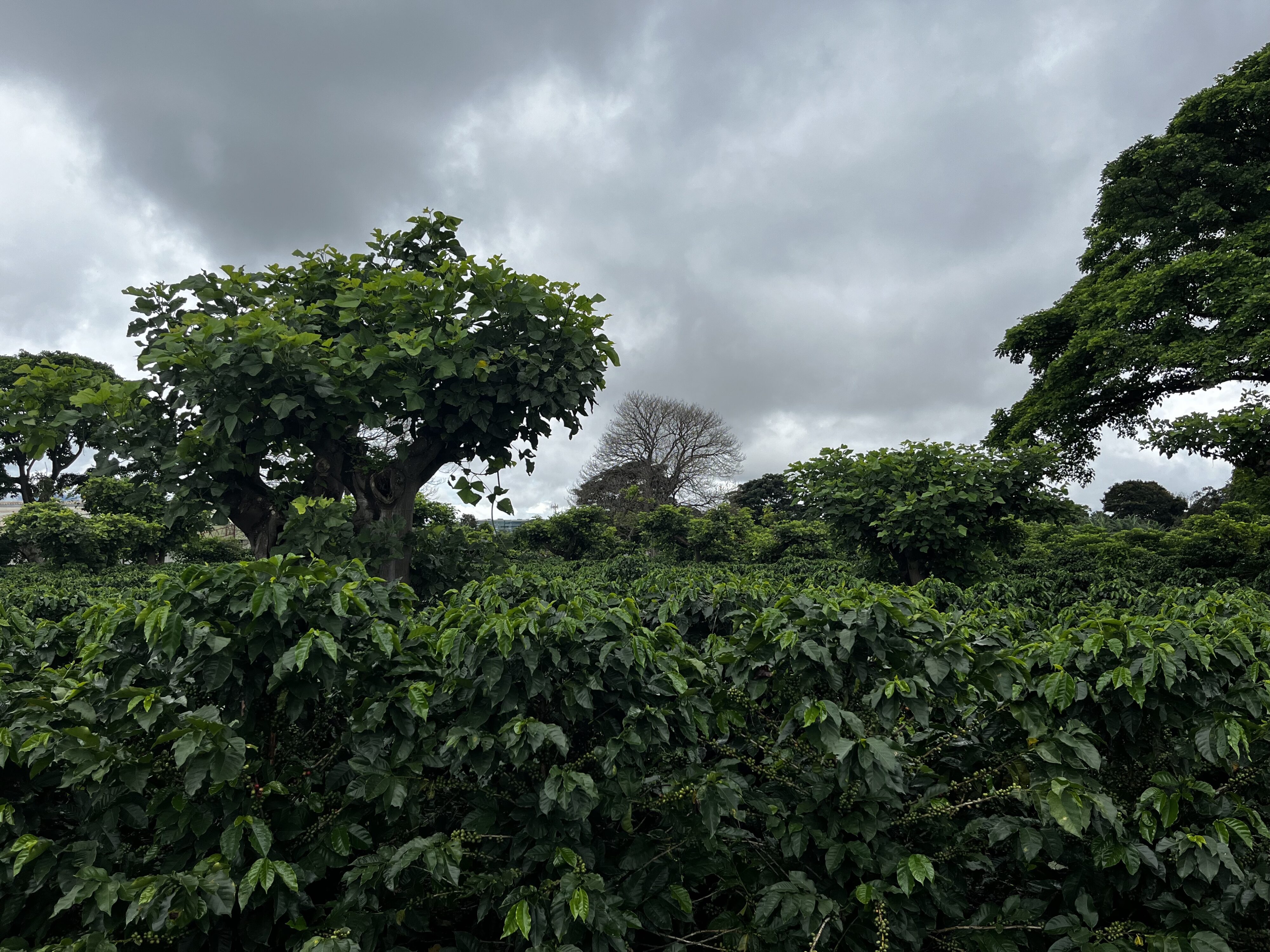
Maria Jose Vargas

Maria Jose Vargas
Editor’s note: This interview was conducted in Spanish and translated to English for this article, and as such, the quotes used in this story were translated so that they make the most sense to English speakers and may not be word-for-word.
“My name is Ignacio Vargas Sánchez. I am Costa Rican […] and I’m dedicated to coffee farming, a tradition passed down through my family and one that I enjoy,” my dad said proudly when I asked him to introduce himself.
Coffee culture is a foundational part of our family tradition and who I am. I grew up in a large, close-knit family, where more than 50 aunts, uncles, and cousins would gather once a year in an activity to collect coffee and honor our family’s coffee-growing roots. The fun began when about 30 of us squeezed into the back of a Toyota Dyna pickup truck, packed tightly together, and laughed and teased each other as we headed to the coffee farm. Yes, I know. Really unsafe, but also a lot of fun.
Once we got to the coffee farm, we would attempt to collect coffee for a couple of hours, only to realize how hard and labor-intensive it was. I would rapidly give up my dedication to focus on what was naturally most important to 7-year-old me: playing and running around the farm with my cousins. The activity would then transform into enjoying a Costa Rican breakfast under the trees’ shade, while we teased each other about who had most likely done the worst job at collecting coffee cherries.


Among all the family activities I grew up with, this one was always one of my favorites, and hearing my dad introduce himself as a coffee farmer by tradition, reminds me of it.
In recent decades, Costa Rica has undergone a large urban and commercial development in the Central Valley, where cement structures have replaced coffee plantations, a key economic activity since the 1800s. According to The State of the Nation report in 2018, just in the past few decades, the urbanized area in the Central Valley has increased by 65%.
At the same time, one major climate change threat in cities is heat stress due to the Heat Island effect, where structures such as buildings, roads, and sidewalks raise temperatures in urban areas as they absorb and release high heat levels. A study in the Costa Rican Central Valley shows that coffee farms can reduce surface temperatures by more than 20°C (the equivalent of a 36°F change) compared to fully urbanized areas.
Rapid and massive urbanization also threatens the habitats of many urban wildlife species. In Costa Rica, a study conducted by the University of Costa Rica and the National Autonomous University of Mexico (UNAM) links the decline of coffee farms in the Central Valley to extinction threats due to habitat reduction for the endemic bird Cabanis’s Ground Sparrow (Melozone cabanisi).
La Valencia – the neighborhood where my family’s farm is located – in Santo Domingo, Heredia, is no exception to urbanization trends. My dad, Ignacio, was born and raised in Santo Domingo, an area in the Central Valley of Costa Rica. He remembers the days when he would go to collect coffee in La Valencia.
“As soon as we went on school vacation, we would go to collect coffee because our vacation coincided with coffee harvesting season. My whole family would walk to the farm together, filled with incredible joy, carrying lunches prepared in the morning to enjoy in the coffee fields, where we would spend the entire day,” he said, filled with nostalgia.
“In the past, it was common to see that area (La Valencia) bustling during coffee harvests, with many people walking through the streets to collect coffee from the various farms […] Large groups of people would walk along streets that were once made of gravel. At that time, vehicular traffic was very rare—only an occasional car. You would mostly see ox carts used for transporting coffee. Depending on their financial situation, people would either use an ox cart or a car, though cars were very scarce.”
Today, the same streets my dad used to walk through are full of supermarkets, factories, and commercial offices. I can see a McDonald’s on the corner and the latest neighborhood acquisition is the first Dunkin’ Donuts in the country, for which hundreds of people lined up on opening day. “Today, the same number of people travel those streets, but in vehicles, heading to work at the various industries around the area,” my dad said.
Among the few things that remain the same in the area is my family’s farm, Finca Rivera. My dad is one of only two neighbors in La Valencia who, despite commercial development in the area, has kept his coffee farm. Finca Rivera, which spans 10 hectares (approximately 25 acres), belonged to our family for three generations before him, and he has now managed it for 30 years since his father passed on the administration to him.
Coffee farms in urban areas have a major positive impact because they provide green spaces that help regulate urban temperatures and promote biodiversity.
“Coffee is a tree (plant) species of about 1.5 meters (approximately 5 feet) tall and densely grown in areas dedicated to coffee. In a coffee farm, these plants are spaced 1 to 2 meters apart and have a population of 5,000 plants per hectare,” my dad said.
“In addition to the coffee trees (plants), you can also find other trees that support coffee production, and other plants grown on the property, like bananas and plantains,” he said. He quickly did some math and assertively said: “The farm (La Rivera) contains 50,000 medium-sized coffee (trees), plus shade trees, trees in live fences, and other trees we plant in the farm – these coffee farms are a small green lung within a city filled with buildings!”


My dad goes on to explain how coffee cultivation practices have changed during his time managing the farm.
Over the past years, he has been working on reforesting the farm with Poró Gigante (Erythrina poeppigiana). Poró is a legume tree known for its natural nitrogen-fixing properties.
He shares how it works: “Nitrogen fixation in the soil is important because coffee plants, as part of their physiological functioning, capture nitrogen from the soil for their nutrition.”
Having Poró trees on the farm reduces the need for nitrogen-based fertilizers, which in large quantities can contribute to environmental issues such as water pollution, an increase in greenhouse gas emissions, and soil degradation.

My dad continues to point out the benefits of Poró trees. He shares that their canopy shelters the coffee plants from the harsh sun and rain.
“[The] Poró tree renews its leaves at a certain time of the year and when the leaves are shed they form a vegetative layer on the soil that will later form an organic fertilizer,” he said. “Also, this layer of leaves is a natural mulch in which weeds will not grow.”

But not all weeds are harmful. “There is also growing awareness about certain plants (weeds) that coexist with coffee crops without causing harm. It’s been proven that some of these weeds can live in harmony with the coffee plants and don’t compete with them at all,” he said.
This is also helpful in reducing the need for chemical products, such as herbicides. “[…] I believe their use is decreasing more and more,” he said. And when you do need to clear weeds, my dad said the use of brush cutters is also replacing herbicides.
The changes in managing coffee crops on my dad’s farm mainly come from the technical assistance provided by La Libertad Coffee Growers Cooperative, where he delivers his coffee, and from the insights he has gained through obtaining certifications like Rainforest Alliance and Starbucks C.A.F.E Practices.
“This information helps us raise awareness about the use of chemicals in coffee farming. There is still a long way to go, but progress has been made,” he said. He also highlights that his work to increase tree coverage on the farm came from a growing technical trend he noticed. As he read and informed himself, he recognized the significant benefits of shade for coffee plants and began incorporating it into his own practices.
Listening to him reminds me of the importance of working directly with farmers when transitioning to sustainable practices. His message brings up his courage and humility to recognize that even after 40 years of experience, there is still more to learn. It makes me reflect on how this blend of openness and practical guidance is powerful and essential for fostering local sustainable change.
My dad unknowingly combats the urban heat island effect and enhances urban biodiversity connectivity in Santo Domingo, Heredia. If you ask him, he probably would not even know what this climate jargon and concepts mean, yet he is doing it. His motivation for preserving his coffee farm in a highly urbanized area is not driven by economic gain or even elevated climate change awareness. His motivations are rooted in his deep love and the sentimental value of his family’s coffee legacy and a deep connection with the healthy lifestyle farm life offers. “You enter the coffee farm and you breathe a different kind of air […] and start to enjoy things that no longer exist out there,” he said.
My dad’s story is one of the power of personal passion and cultural heritage to preserve our environment. It demonstrates that impactful actions can stem from a sincere connection with nature and one’s roots, not just from scientific and technical knowledge. By preserving his coffee farm, my dad not only honors my family’s coffee roots but also leaves a legacy for the quality of life in his — and my — hometown.